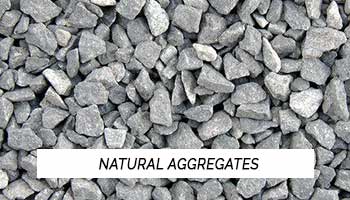Top 10 Different Types of Aggregates | Classification & Uses
What are Aggregates?
Aggregates are the main ingredient in making materials of Concrete and Mortar which occupies 70-80% of Concrete Volume. Aggregate as a filler with binding material is the derived product of Sedimentary, Igneous and Metamorphic rocks and thus it is hard, strong, and durable. It can also be made from blast furnace slag. As aggregates are used in large quantities in the manufacturing of concrete, they have a significant effect on the properties of the Concrete. Therefore, it is vitally important to choose the right variety and quality before constructing. Unlike other making materials like cement and water, this does not require any special storage place and has negligible effects when exposed to various climatic conditions.
Types of Aggregates & Classifications:
1) Based on Geological Origin: There are different types of Aggregates
Natural Aggregates: These are one of the types of aggregates and are obtained from naturally obtained rocks like Sedimentary, Igneous and Metamorphic rocks. Sand and gravel are also fallen into this type of aggregates. As these Aggregates are naturally obtained which may have a lot of impurities, so it should be sieved and washed before used in Concrete.

Artificial Aggregates: Blast Furnace Slag, Broken Bricks and Synthetic aggregates are Artificial Aggregates. Blast furnace slag aggregate is formed from slow cooling of the slag followed by crushing and are used for making precast concrete products by obtaining strong, denser particles. Broken bricks are used in Foundation for mass concerning and are not recommended for reinforced concrete works. Synthetic aggregates are made by Thermally processed materials like expanded clay and shale (finely-grained sedimentary rock, composed of mud)

2) Based on Size: They can be classified as following types of aggregates
Coarse Aggregate: Aggregate retained on 4.75 mm sieve are known as Coarse Aggregates. They are obtained by natural fragmentation or by artificially crushing the rocks. The maximum size of coarse aggregate can be 80 mm.

Fine Aggregate: Aggregates that are passed through 4.75 mm sieve are classified as Fine Aggregates. They are natural sand, crushed stone and crushed gravel stone. The minimum size of fine aggregates can be 0.06 mm.
Take a look at more different types of Aggregates and their classifications. You can also check the best-crushed stone price for construction.
Read More



Comments
Post a Comment